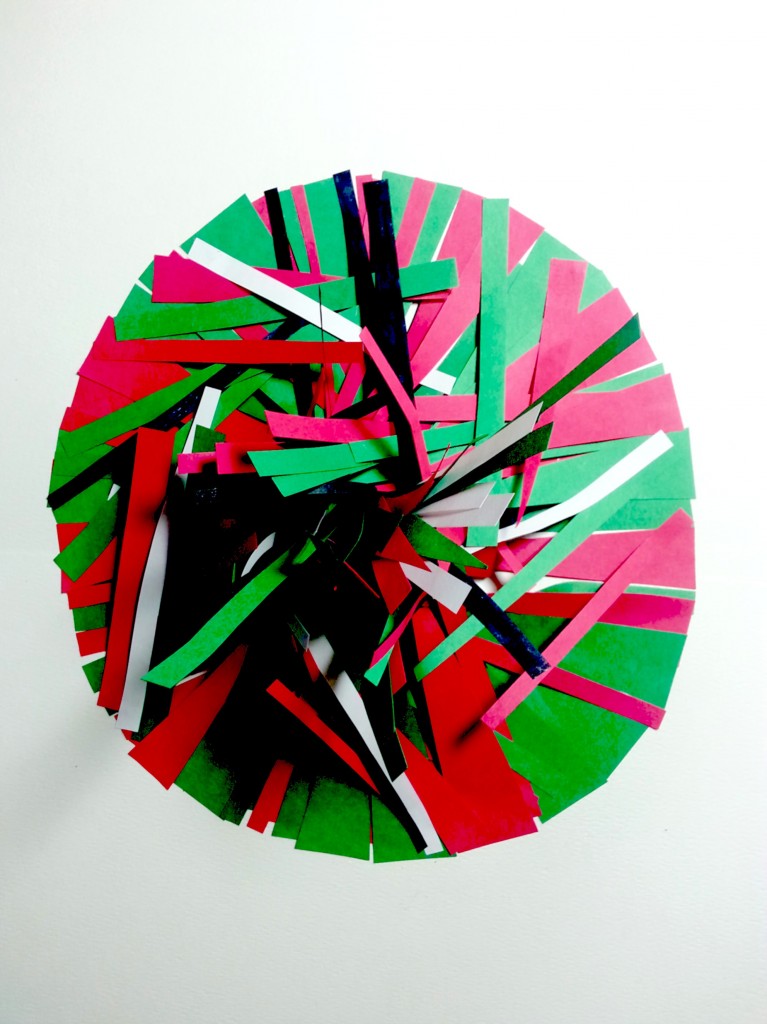Play of Symbolism
Play of Symbolism Conceptual art, material used: construction paper
This work is inspired by the Shi’i passion play, Ta’ziyah and the color symbolism deployed in the artistic and religious expression of the play. Like Lucio Fontana who attempted to merge two-dimensional and three-dimensional realms in one piece of artwork by cutting the surface of a canvas, this piece attempted to blur the distinction between flat art and spatial/sculptural art. The implication derives from this is to appreciate the unique quality of Ta’ziyah, which crosses over the boundary of art and ritual, and also the dynamic changes in the role of the actors and audiences. Rich dynamics and artistic freedom is observed in the play when the actors often allowed to extend their movements beyond the typical setting of acting and audiences are directly drawn into the play as active participants.
Ta’ziyah uses color symbolism through the costume of the actors. The heroes who stood with al-Husayn in his suffering at Karbala dress in green and the antagonists in red. There are also white and black symbolizing life and death. In this work, each pieces of colors also represents the diversity and numerousness of individual souls that long for the presence of God and they eventually form circle which symbolize the universe and God Himself. God is eternal, encompassing, interpenetrating in all His creatures. God reside in every soul and material realms and also transcends them.
The passion story of al-Husayn gave me an opportunity to rethink about the question of theodicy. As depicted in this piece of work, good and evil coexist in human lives entangled and juxtaposed even in one facet of space time. Then who is the ultimate author of evil and suffering? Is it God or His Adversary?
